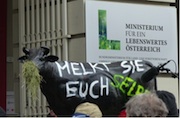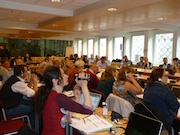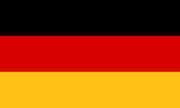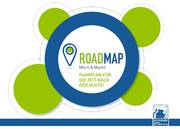EMB Newsletter April 2015
Newsletter as PDF
Contact
EMB - European Milk Board asbl
Rue de la Loi 155
B-1040 Bruxelles
Phone: +32 - 2808 - 1935
Fax: +32 - 2808 - 8265
Dear Dairy Farmers and Interested Parties,
The European milk market has had no working safety net since 1 April. That is why in our EMB campaign of action on 31 March – the last day of the quota system – we flew the flags of the 28 EU member states at half mast. Just to make one thing clear: in no way do we mourn the passing of the quotas; instead we regret the lack of a functioning system for the time afterwards! This is because so far the politicians have failed to put in place suitable market instruments for preventing crises. We assume that dairy farmers in many EU countries will boost their production when the quotas end. Too much milk in the market always means a price collapse – the next market crisis is inevitable!
According to forecasts, demand for milk in Europe will decrease in the next few years. The “export opportunities” and the “new markets in Asia and Africa” preached by all and sundry are not a sustainable solution for the European milk market. Unilateral export orientation is short-term and uncertain, not to mention the fact that it also destroys local milk production in those countries.
The European Milk Board member organisations’ aim with their vigil outside the European Parliament was to send out a clear signal to counter the songs of praise and victory slogans of the farmers’ unions and the dairy industry. Our fear is that as from April the multinationals and banks will take control. The European dairy farmers are already unable to cover their costs. In Belgium we are currently paid between 25 and 27 cents per litre of milk – our recent cost study showed production costs to be 46 cents! In future, more and more dairy farms will vanish into thin air.
The milk market requires crisis instruments for the time after the quotas. Our Market Responsibility Programme is a solid, well thought-out mechanism for adequately countering market crises. The coming months will show how the milk market will develop. We in the EMB will keep a very close eye on the situation, and are ready and waiting to send out a strong signal from the dairy farmers when required.
Erwin Schöpges, Member of the EMB Board
Vigil 31 March: European dairy farmers warn of a severe loss in market power and chronic price slumps
Austria: Day of action on 31st March
Information on the milk market situation in the countries
The situation in Germany
Milk & Market Roadmap – a roadmap for the time after the quotas
EMB Calendar
The EMB Executive Committee's key dates in April 2015:
- 01.-02.04.: EMB Members’ Assembly in Brussels
- 23.04.: Visit from the Norwegian organisation „Bondesolidaritet“
- 29.04.: Meeting Milk Market Observatory (Brussels)
Impressum
European Milk Board asbl
Rue de la Loi 155
B-1040 Bruxelles
Phone: +32 2808 1935
Fax: +32 2808 8265
E-Mail: office@europeanmilkboard.org
Website: http://www.europeanmilkboard.org





